Guatemala - February 2005 - Photographing the Mayan People
A very late decision in January 2005 resulted in a trip to Guatemala the next month to participate in a workshop entitled "Portraiture / Photographing the Soul of Indigenous Guatemala." The title over-reaches, but the workshop, under the auspices of Art Workshops in La Antigua Guatemala and taught in La Antigua and other Guatemalan locations by the talented young Canadian photographer, Nance Ackerman, exceeded expectations. To say much more would delve into the very insightful and helpful lessons in inter-cultural relations at the core of the workshop, but suffice it to say I think that Nance provided a milieu for some extraordinary portraiture, both up-close-and-personal and at a distance, of a fascinating people.
The workshop covered various types of portraiture of indigenous peoples: (1) formal, (2) travel, (3) documentary, (4) environmental, and (5) art, among them. My work is of course primarily artistic in content, but I've tried to incorporate other styles in the work shown here.
So this gallery is largely about people, the indigenous people of Guatemala, descendants of the ancient Mayan civilization, by which name they are still known today. In many cases these people are portrayed in their natural surroundings, while in others the portraiture is more formal. In many cases, the portraits were in exchange for payment, to which some may object, but to paraphrase Nance, "Do not impose your values on your subjects."
The Mayans themselves are often poor in possessions, but they are truly rich in soul, and are among the most welcoming subjects I've ever photographed.
This gallery is divided into four sections, shown below. Explore each -- they link together for easy navigation. Please note that photos are sometimes annotated with a note appended beneath the title.
Three Families
We photographed three families at three locations. The first was a family used by Art Workshops in Guatemala for many years, who come on the first day with their backstrap looms (and many weavings and embroideries for sale), dressed in colorful Mayan dress. Three generations are represented (or perhaps four), but only two smaller boys and none of the men come dressed in traditional garb (for reasons associated with attrocities committed against the indigenous peoples by the Guatemalan military fifteen or more years ago).
The second family was engaged literally spontaneously and was found living just behind our lodgings, the Hotel Toliman in San Lucas Toliman on Lake Atitlan.
The third family had been Nance's subject in a prior workshop, and we dropped in on them unannounced the workshop's last shooting day.
In all cases, the subjects were paid, for the first family I don't know how much, but for the other two twenty Quetzales (about US$2.50) per person, which I considered absurdly low until told that not long ago a day's wages in Guatemala was approximately 15Q.
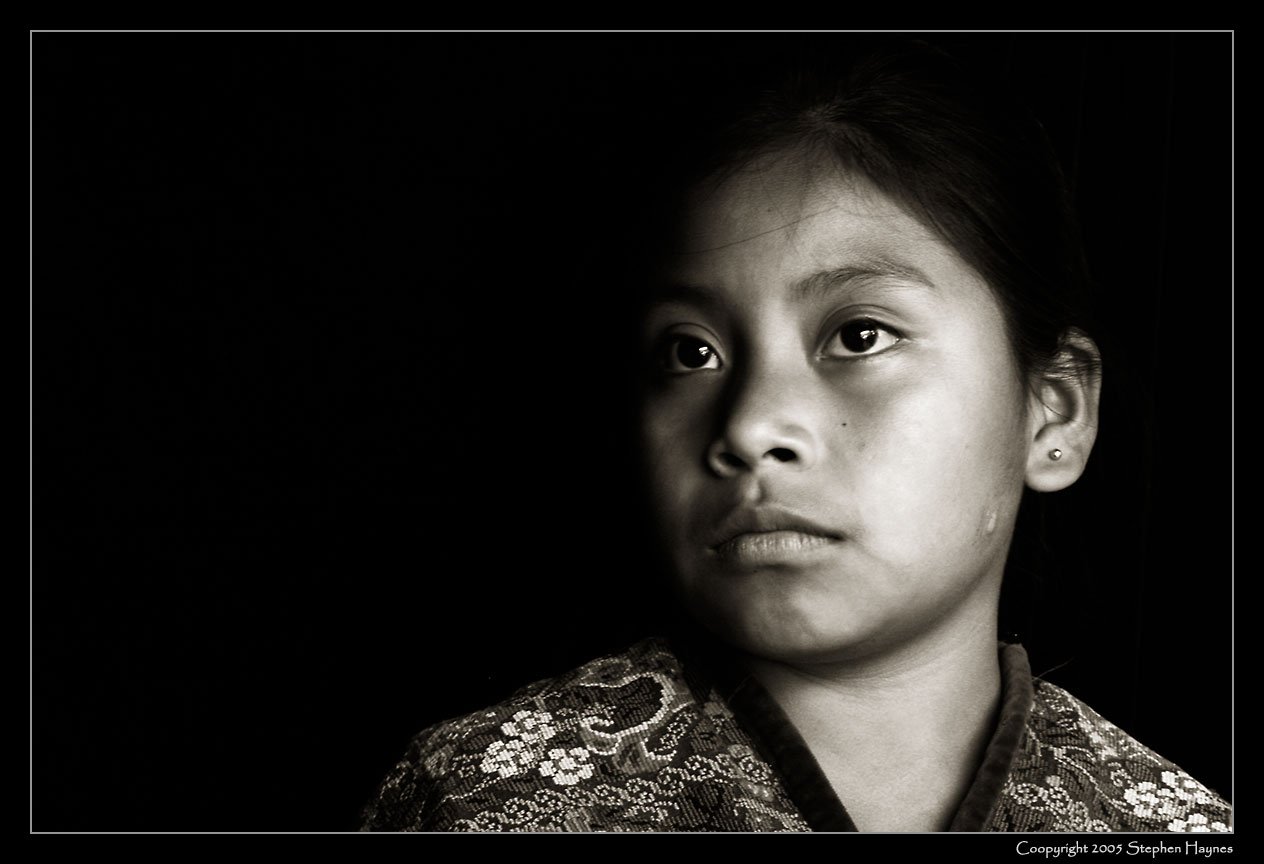
Mayan Formal This is the first of a series of formal portrait taken of the first family using a technique developed during my first portraiture workshop with Judy Dater two years previously. I had brought with me both tripod and a black sheet to hang and use as background. The photo was shot at 0.3 seconds @ f/19. Although she was dubious of the technique when she saw me first employ it, upon seeing the results on the computer screen during the workshop Nance allowed as how she liked them better than she thought she would, and I trust she will like them even better now, sepia-toned and sharpened.


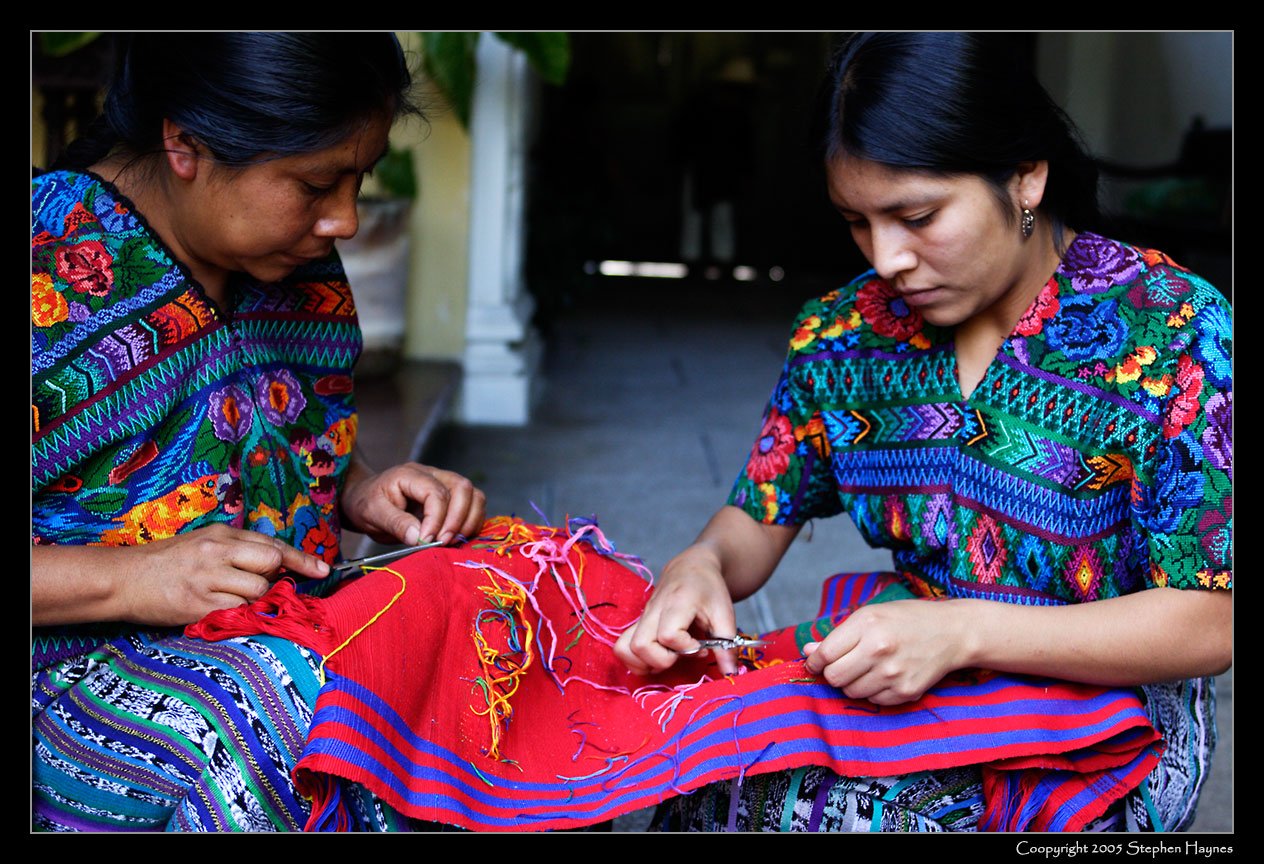



We photographed the family as they walked from the inner couryard of the Casa Grandé to the 18th century ruins of San Francisco. Of my photos of that walk, this is the "money shot," in which everything came together.


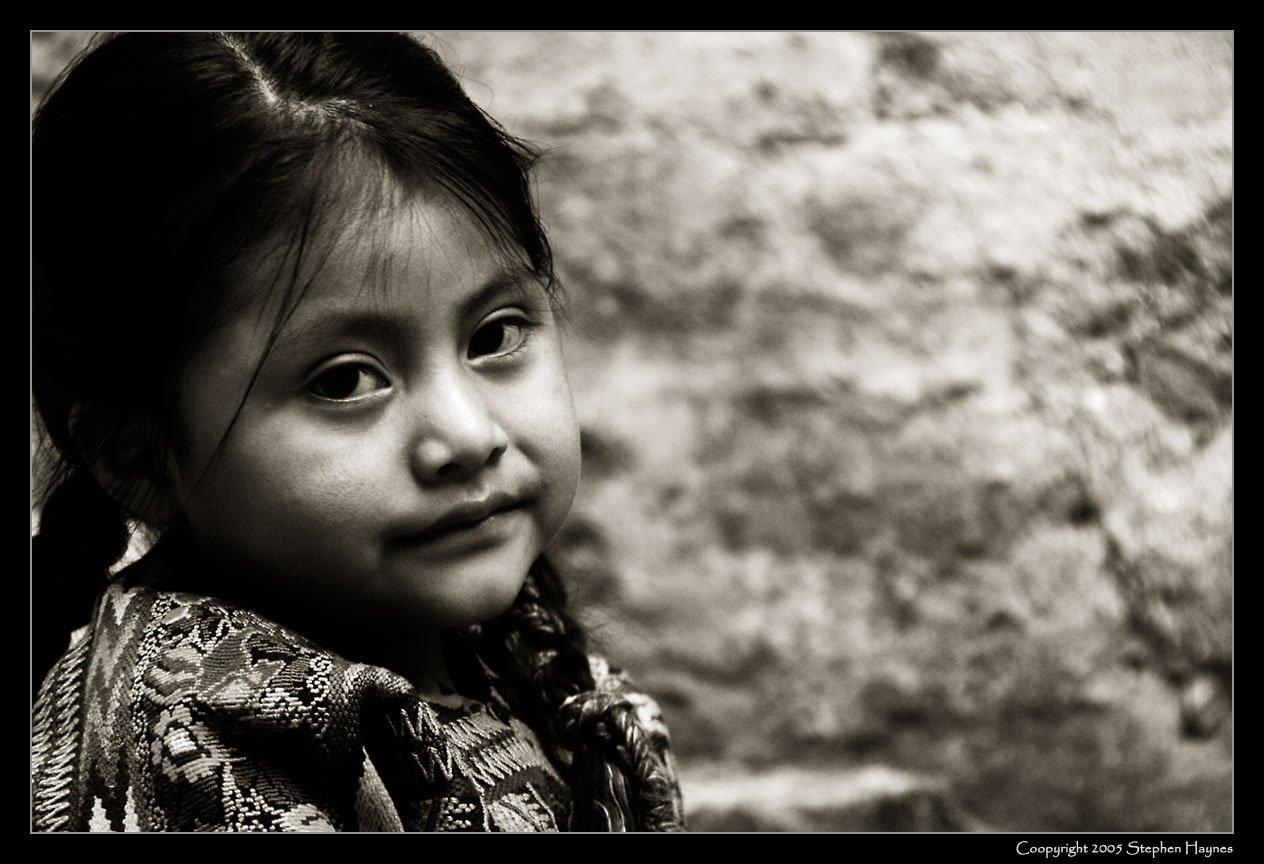
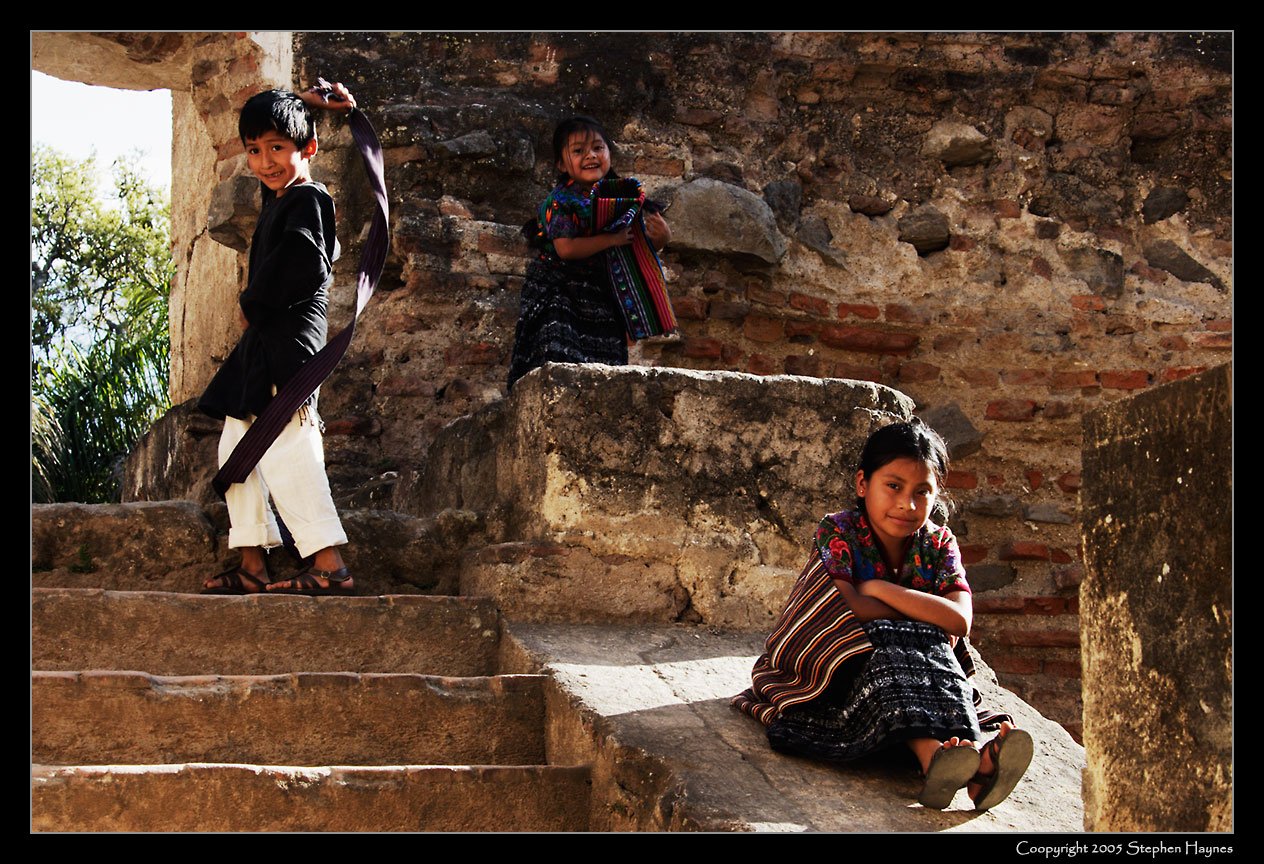
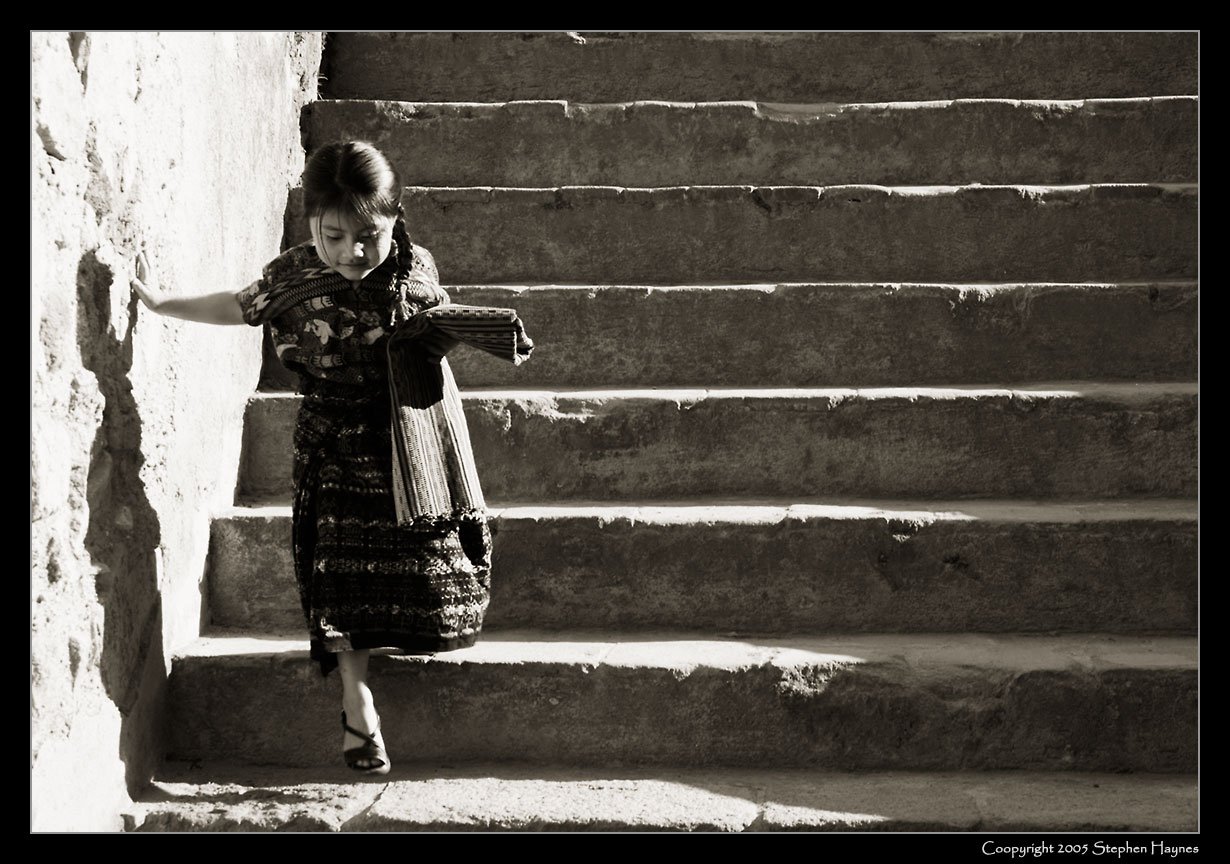
Down the Steps -- no, she is not missing a leg; it's just how the photo captured her

We photographed the second family on the grounds of Hotel Toliman in San Lucas Toliman. I tried for a blend of formality and modesty with this young lady, Brenda. All these models were totally inexperienced, but worked well with us.
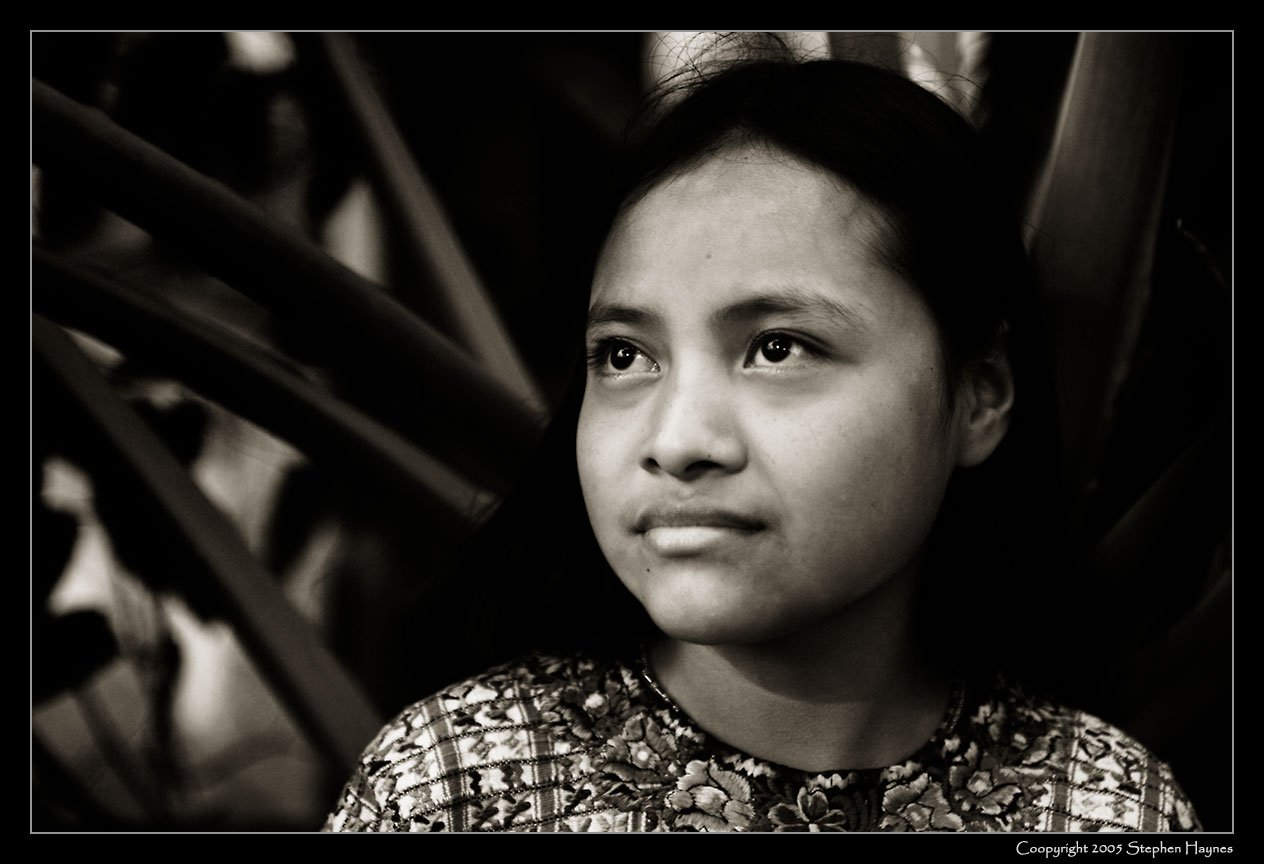

This young woman had a most striking face, with features we might associate with stone Aztec heads and a classic aquiline nose.

Markets
As I mentioned to Nance after our first morning shooting there, markets are a target-rich environment. This is only a small sampling of the hundreds of photos I took on two visits to the La Antigua market and one to that at San Lucas Toliman.
In every case here, the photo is a "grab shot," often taken at a distance with my long lens. Sometimes the subject is aware of my photography, but I expect not many realize how "close" I can get.

I wonder how many gringos visiting La Antigua also get up early on market days and walk to the town's western edge to visit the huge inflow of indigenous farmers (or, mostly, their womenfolk) offering fruits, vegetables, flowers, and other consumables (and more durable goods) for sale in the huge outdoor and indoor market.
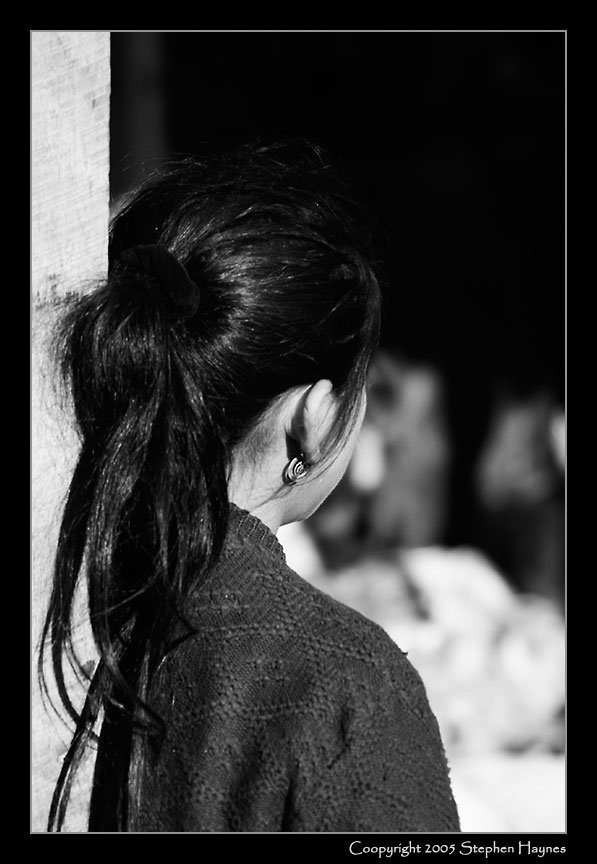

I love this shot. Not only for the color and intensity, but for the young woman's strength and confidence, engaging me directly with a look of challenge while she carries this huge sack on her head. In all likelihood, she also has a child in a sling on her back. On a technical note, this photo also illustrates the great power of shooting RAW images with a digital camera. The shot was overexposed by at least one stop, with large portions of the sack washed out. Work with Adobe's Raw Converter, however, together with some Photoshop work, rescued the image. See the next photo.






The Avocado Carrier

The Mango Eater

Weighing Peas
Religion & Processions
During the Lenten weeks the community and neighborhood churches of La Antigua hold processions that wind their way through La Antigua's streets. The processions, day and night, might be a rich source of art photography, but we didn't have time to devote to them.
One photograph here is distinctly different, taken in San Andreas Itzapa at one of four shrines to the Mayan deity/Catholic saint, Maximon/St. Simon, which are the Church's concession to Mayan traditional religion. The photo captures a part of several intricate and colorful ceremonies that I'd love to spend days observing and photographing.

Praying to Maximon The celebrant chanting while smoke from fires and incense whirls around him. Thanks to Nance for this photo -- as I sat with her near the end of our session at the shrine, she pointed to the left and said, "The best shot is there." And she was absolutely right.

We saw a single daytime and a single nighttime procession. This was by far the more impressive of the two, with this huge "float" carried by a multitude of purple-robed penitents. Not a particularly arty shot, but it conveys the impressions of color, intensity, incense, and religious sincerity.

A smaller, nighttime procession. The celebrants carrying the float walk across "carpets" of geometric or floral design constructed only hours or minutes before on the street's surface, one of which you can see here. Immediately after the celebrants pass, the carpets are swept up and all signs of them disappear.


Way of the Cross -- This photo is a wonderful example of rediscovery. In an advanced workshop at Anderson Ranch during the summer of 2005, I brought the entire set of Guatemala photos, thinking that I'd find some to practice on. Suddenly, this one jumped out at me. In the end, I printed "Way of the Cross" as a magnificent 20"x30" Digital Pigment Print, one of the most impressive prints I've ever made (IMHO). In August 2005 the 20"x30" print was accepted for the Minnesota State Fair Fine Arts Competition.
Miscellaneous
This "miscellaneous" section contains some of my most artistic photography taken during the workshop.
I've often added remarks on individual photos' pages, but I do wish to note here that the “Traces of Womankind” series is a tribute to Nance, who was photographer for the wonderful book, “Womankind.”

So I was sitting on the curb taking photos (actually photographing others in the workshop photographing some children in Santa Maria de Jesus). I stopped momentarily and sensed a presence beside me. Then I snapped this.

Unloading unsold goods from the back of this pickup.
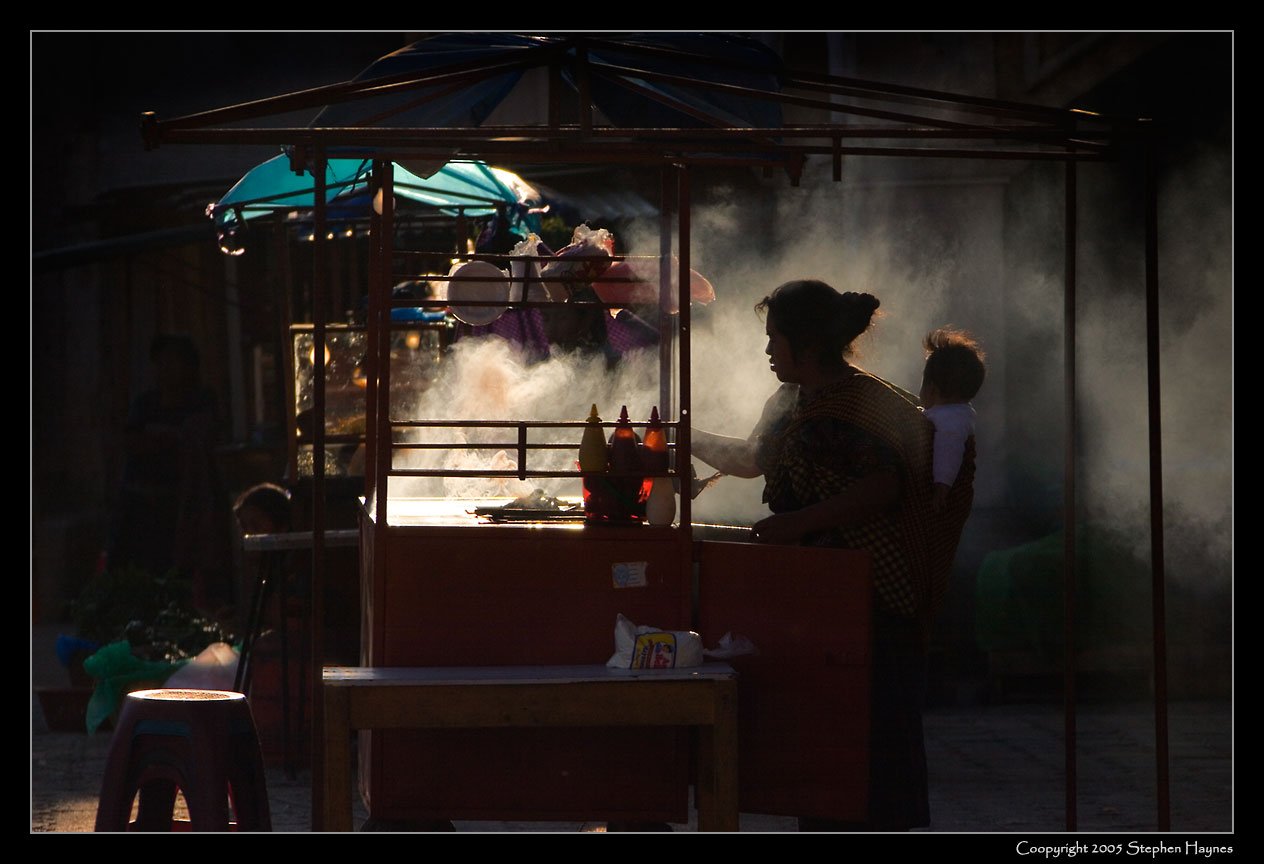
Fast Food -- Santa Maria de Jesus

Traces of Womankind I -- This photo was taken at the open-air, public clothes washing facility in La Antigua, seen above is the wall where countless women have stood over the years to wash their clothes, the press and movement of their bodies steadily wearing off the concrete's paint. The title is a tribute to Nance Ackerman's book.

Traces of Womankind II

Traces of Womankind III -- These are the actual clothes-washing basins, tying together the prior two photos.

Lakeside (Lake Atitlan) at San Lucas Toliman.

Nance was quite taken with this photo when she first saw it during the workshop, although I'm not sure she quite approves. As she said, "no Mayan woman would knowingly show that much leg to a strange male." So, this is clearly a "stolen" shot -- from about 100 yards away, sitting almost directly into the sun from the subject's viewpoint.

Sitting curbside, waiting for the procession. How could I resist?

Two Urns -- Santa Maria de Jesus

Early Morning Street -- Santa Maria de Jesus